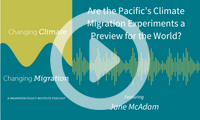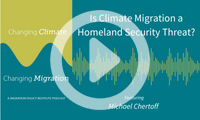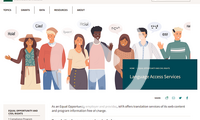Immigration Policy & Law
Recent Activity

What can the rest of the world learn from climate migration legal experiments in the Pacific? This episode of the Changing Climate, Changing Migration podcast features insights from renowned legal scholar Jane McAdam, who directs the Kaldor Centre for International Refugee Law at UNSW.

Coordination and communication among key stakeholders in the resettlement network have never been more critical. This conversation focuses on how consultation supports capacity building and where it can, at times, fall short.

With the Global Refugee Forum approaching, this webcast explores how municipalities and other key stakeholders can be engaged in informing and delivering on the 2024 resettlement and complementary pathways pledges.

Former U.S. Homeland Security Secretary Michael Chertoff talks about the security implications of climate change and migration in this episode of the podcast Changing Climate, Changing Migration.

White House and Department of Health and Human Services officials join a leading language access advocate and MPI's Margie McHugh in a conversation exploring executive-branch efforts related to language access provision, upcoming actions, and opportunities to improve the provision of information and services in languages other than English in federal programs.























As Europe and the United States Face Similar Migration Challenges, Spain Can Act as a Bridge